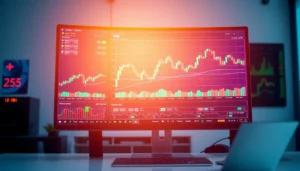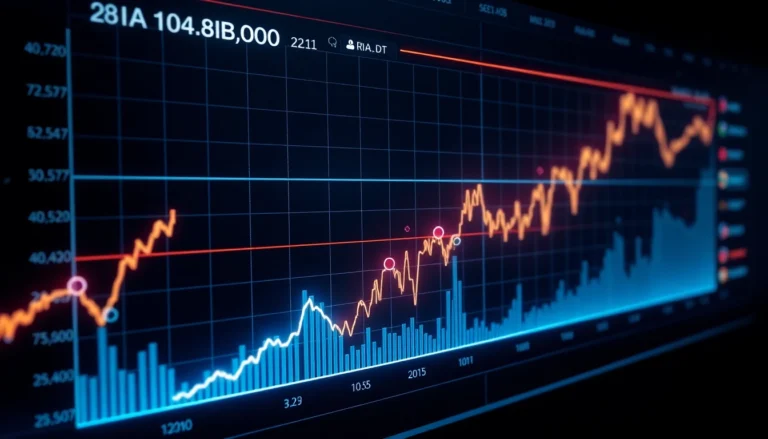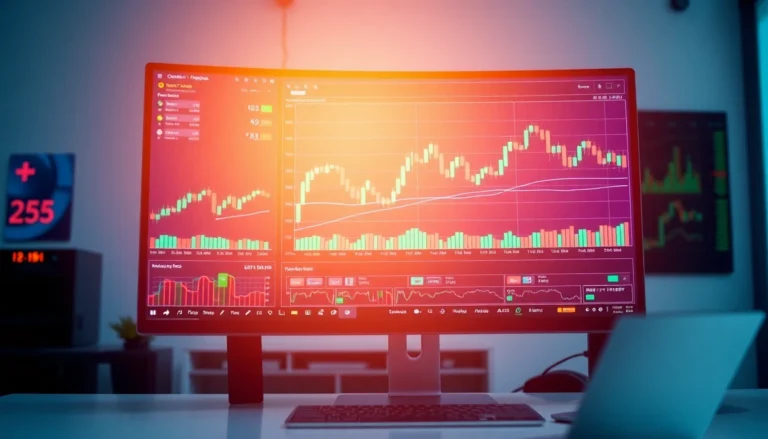Current Stock Market Conditions and Key Indicators
The global financial landscape continues to display mixed signals, reflecting underlying economic uncertainties and shifting investor sentiment. Major indices such as the European STOXX 600 and U.S. benchmarks like the S&P 500 have experienced marginal movements, underscoring a cautious yet resilient market environment. Notably, European shares closed slightly higher, buoyed by robust defense stocks amid geopolitical tensions, while Asian markets showed modest gains driven by hopes of U.S. interest rate cuts. To stay informed on these evolving dynamics, consider reviewing our detailed Stock Market Updates which provide real-time insights and analytical commentary.
Global Market Overview: Leading Indices and Sector Performance
Global equities have experienced a subdued week with broad-based declines amid concerns over inflation, monetary policy uncertainty, and geopolitical tensions. The European STOXX 600 ended marginally up at 551.07 points, supported by defense and financial sectors. Meanwhile, the U.S. markets saw declines, influenced by ongoing trade disputes and SEC regulatory actions affecting cryptocurrency firms like Coinbase and MicroStrategy. Asian stocks, notably the Nikkei, extended gains to reach record-high levels, fueled by optimism about U.S. rate cuts and robust export data. Commodity markets also reflected cautious optimism, with oil futures slightly down but poised for a weekly gain, and gold reaching a new record high at $3,501.59 per ounce, driven by inflation hedging sentiment and US inflation data in focus.
Key Economic Data Impacting Stock Markets Today
The release of U.S. labor market data, including employment figures and wage growth, has significantly influenced market direction. Recent reports indicate a resilient labor market, prompting speculation about the Federal Reserve’s monetary policy trajectory. A drop in the U.S. dollar, amid expectations of potential rate cuts, has provided a supportive backdrop for precious metals and emerging market assets. Additionally, Chinese economic indicators reveal weak manufacturing data, contributing to the slip in iron ore futures and affecting global commodity prices. Investors are closely monitoring U.S. economic growth prospects, inflation trends, and central bank signals to adjust their strategies accordingly.
Analyzing Gold and Currency Market Fluctuations
Gold remains an attractive asset amidst macroeconomic uncertainties, with prices reaching an all-time high of $3,501.59 per ounce—surpassing previous records set in April. The precious metal’s rally is fueled by concerns over inflation, geopolitical tensions, and US monetary policy indecision. Meanwhile, currency markets exhibit subtle shifts; the dollar declined slightly against major currencies, including the yen and euro, as market participants anticipate potential rate cuts from the Federal Reserve. The euro appreciated marginally to $1.1710, while the Australian dollar also gained strength amid rising commodity prices. These currency movements reflect broader risk-on and risk-off sentiments, influencing international trade and investment flows.
Drivers Behind Recent Market Movements and Investor Sentiment
Political and Geopolitical Factors Influencing Stocks
Geopolitical tensions, including trade disputes and policy interventions, continue to shape investor sentiment. Recent developments, such as the U.S. President calling on the Fed to resign and the ongoing discussions around China-U.S. trade relations, have led to heightened market volatility. The European Union’s cautious stance on new regulations and the upcoming UK political landscape, especially concerning the Libra cryptocurrency project, further compound uncertainties. These factors instill a sense of cautious optimism among investors, balancing risks and opportunities across asset classes.
Central Bank Policies and Interest Rate Trends
Central banks worldwide are signaling a shift towards more accommodative monetary policies amid persistent inflation concerns. The Federal Reserve’s potential rate cuts, coupled with the Bank of England’s stern warning to Facebook regarding the UK launch of Libra, highlight a global trend towards easing monetary conditions. U.S. rate cut expectations have driven the dollar lower and ignited interest in gold and equities as investors seek higher returns. Conversely, inflation data and economic resilience will determine the speed and magnitude of future policy adjustments.
Market Reactions to U.S. Labour Data and Economic Reports
Recent U.S. employment data indicates a tight labor market, reinforcing expectations for a potential pause or slowdown in rate cuts. The market’s response has been a subtle decline in the dollar with a concurrent rally in precious metals, signaling a flight to safety amid economic uncertainty. Additionally, reports highlighting SEC actions against major crypto firms, including Coinbase and MicroStrategy, have impacted cryptocurrency valuations, creating volatility and presenting both risks and opportunities for savvy investors.
Emerging Trends and Investment Opportunities
Tech and Cryptocurrency Market Synergies
The convergence of technological innovation and cryptocurrencies is shaping a new frontier for investors. Companies like Meta are actively exploring partnerships to enhance app functionalities, integrating AI to improve user engagement. Simultaneously, the NFT market has soared past a market cap of $9.3 billion, despite recent declines of $1.2 billion, indicating ongoing investor interest in digital assets. This intersection offers opportunities for diversification—investors can capitalize on emerging fintech, blockchain applications, and digital collectible markets.
Impact of Regulatory Developments on Market Dynamics
Regulatory actions remain a critical factor, particularly in cryptocurrencies. The Bank of England has warned Facebook about strict conditions for Libra’s UK launch, reflecting increasing scrutiny of stablecoins and crypto initiatives. The introduction of new rules and compliance requirements could introduce volatility but also create opportunities for firms that adapt swiftly. Investors should monitor legislative developments to align their portfolios with emerging regulatory landscapes.
Strategies for Capitalizing on Market Volatility
Market volatility can be exploited through diversified portfolios and tactical trading strategies. Approaches such as dollar-cost averaging, sector rotation, and options hedging can mitigate risks while positioning for upside potential. Staying informed through real-time data and employing comprehensive analytics will help investors identify emerging trends and optimize decision-making amidst fluctuating markets.
Practical Steps to Stay Ahead with Stock Market Updates
Utilizing Real-Time Data and Market Analytics
In a fast-paced environment, access to real-time data is crucial. Investors should leverage advanced analytics platforms, financial news feeds, and economic calendars to monitor market movements, corporate earnings reports, and geopolitical news. Incorporating artificial intelligence tools can enhance predictive accuracy and facilitate proactive decision-making.
Developing a Diversified Portfolio in Fluctuating Conditions
Diversification remains a core principle to manage risk. Spreading investments across asset classes—including equities, commodities like gold and oil, fixed income, and alternative assets—can provide resilience during volatile periods. Allocating a portion to safe havens like gold and considering exposure to emerging markets can buffer against downturns.
Monitoring Global Economic Indicators for Better Decisions
Key indicators such as inflation rates, unemployment figures, manufacturing indices, and central bank statements inform strategic asset allocation. Regularly reviewing reports from institutions like the IMF, World Bank, and national statistical agencies ensures a comprehensive understanding of the macroeconomic environment, empowering investors to adapt promptly.
Future Outlook and Expert Trends
Predictions Based on Current Market Data
Analysts suggest a cautiously optimistic outlook for the remainder of the year, with equities stabilizing and gold acting as a hedge against inflation uncertainties. U.S. interest rate movements will play a vital role; a pause or easing could stimulate bullish trends, especially in tech and crypto sectors. Emerging market growth and technological innovation are poised to drive long-term gains if geopolitical tensions ease.
Adapting Investment Strategies for Upcoming Months
In anticipation of potential rate cuts and economic recovery signals, investors should consider increasing exposure to growth assets like technology, renewable energy, and digital currencies. Conversely, maintaining allocations in defensive sectors such as healthcare and consumer staples can mitigate downside risks. Regular portfolio reviews and stress testing against macroeconomic scenarios will ensure resilience.
Tools and Resources for Continuous Market Monitoring
Anticipate a data-driven approach with tools like dedicated financial dashboards, AI-enhanced analytics, and global economic calendars. Subscription-based services providing expert insights, real-time alerts, and predictive analytics will keep investors ahead of the curve. Educational resources on market cycles, behavioral finance, and technical analysis further empower informed decision-making.










